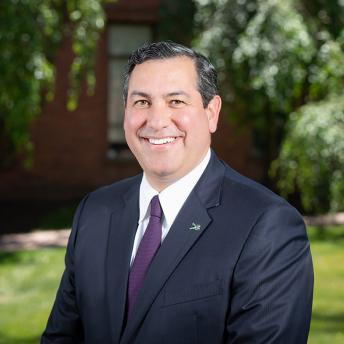What will it take for the U.S. to build a clean energy future to address climate change? What are the financial mechanisms needed to fund green projects? How can the country transition to clean energy in equitable ways? These questions will be among an array of topics discussed at the Yale Clean Energy Conference November 3-4. The conference, which will be in-person and virtual, is co-hosted by the Yale School of the Environment, the Yale Center for Business and the Environment, and the Yale School of Management.
Ali Zaidi, national climate advisor and assistant to the President’s White House Climate Policy Office, and Gretchen Kittel, acting director of outreach and business development division of the Department of Energy Loans Programs Office, will be keynote speakers. Panelists also include leaders from across the clean energy sector — such as wind, solar, and finance — as well as international and tribal communities.
As it gets underway, YSE alumni taking part in the conference offer insights into how the Inflation Reduction Act, which provides $369 billion in climate and energy provisions, is likely to affect the transition to clean energy in their sectors. The legislation — the largest ever U.S. investment in climate action — addresses numerous environmental issues, including clean energy expansion in transportation, infrastructure, and manufacturing; environmental justice; conservation of forests and coastlines; and curbing carbon emissions.
Bryan Garcia ’00 MEM
President & CEO, Connecticut Green Bank

“The passage of the Inflation Reduction Act is a game changer. There are so many incentives within the IRA that, when combined with incentives at the state and local levels, there is the potential to achieve extraordinary clean energy deployment results and reduce greenhouse emissions for our 2030 targets.
“A colleague of mine has coined the term ‘incentive maze’ because if you can navigate the journey for the customer efficiently and effectively, then there is real treasure at the end. And, let’s not forget about the Greenhouse Gas Reduction Fund within the IRA. (It provides competitive grants to mobilize financing for clean energy and climate projects.) Green banks have been waiting for this moment for over a decade.”
Corey Cantor ’19 MEM
Electric Vehicles Associate/ BloombergNEF (BNEF)

"We are seeing increased interest in the North American electric vehicle supply chain following the passage of the IRA. While it will take a while to see the increased result in financial investments and ultimately EV uptake, there are already automakers and battery manufacturers beginning to shift their strategy to take advantage of the new battery and EV subsidies. Nevertheless, the U.S. EV market remains one where demand outstrips supply and the cost of most EVs remains elevated as a result. To broaden the EV consumer base over the next few years, automakers will have to scale-up the total number of EVs available in the U.S. — and not just the amount of different models — as well as adopt new battery chemistries and ultimately reduce upfront cost."
Sara Harari ’19 MEM/MBA
Associate Director of Innovation & Strategic Advisor to the President & CEO Connecticut Green Bank

“The IRA is a much needed turbocharge to the green economy. Not only were important programs like clean energy tax credits re-affirmed, but the new focus on supporting workforce development and environmental justice communities will ensure that the clean energy transition benefits everyone. We are particularly excited about the Greenhouse Gas Reduction Fund, a federal green bank that is modeled after the Connecticut Green Bank, further validating a decade of success. Big questions remain: How can we better serve renters who don’t have the ability to upgrade their homes, and should we be encouraging the wide scale deployment of personal electric vehicles over public transit? But this is an important step.”
Jake Seligman ’12 MEM
Deputy General Counsel/ Clearway

“The IRA should provide long-term stable policy for the clean energy industry, which is something we’ve never had. In addition to providing stable incentives that allow for business planning for more established technologies like solar and wind, the IRA includes new incentives for things like storage, hydrogen, and domestic manufacturing. The legislation stands a real shot at jump-starting the green economy. I am part of an effort within the clean energy industry to try and ensure the IRA lives up to its promises with sound Treasury guidance. To do this, we are advocating for implementing guidance that unlocks capital markets while balancing interests from groups like labor, environmental NGOs, manufacturers, and renewable energy developers like the one I work for. The result should be a framework that creates good jobs and opportunities for innovation and deployment across the domestic clean energy landscape while bringing us meaningfully closer to reaching our climate goals — both for this generation and those to come.”







